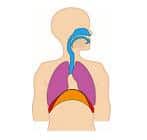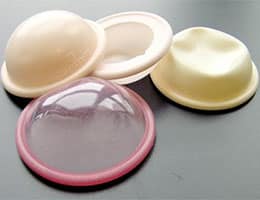 The Latin word diaphragma came to Latin as diaphragma , which in turn, in our language , resulted in diaphragm . The concept has various meanings depending on the context.
The Latin word diaphragma came to Latin as diaphragma , which in turn, in our language , resulted in diaphragm . The concept has various meanings depending on the context.
The diaphragm is a membrane composed of muscle fibers that is responsible for separating the abdominal cavity from the thoracic cavity. This tissue is present in the body of all mammals.
The diaphragm is involved in breathing , both inhalation and exhalation. When inhaling, the contraction of the diaphragm occurs, which helps increase the space available in the thoracic cavity and allows air to enter the lungs. When you exhale, however, the diaphragm relaxes and the air is expelled.
Lyrical singing teachers teach their students to "control" the movement of the diaphragm to make the most of the air. Lyrical singers, who tackle repertoires such as chamber music or opera, must face considerable challenges on a vocal and respiratory level, much higher than those usually encountered in a popular song. For example, long lines are common in which you "should not" interrupt to inhale, and for this it is necessary to optimize the breathing process.
The objective of this supposed control over the diaphragm, since in reality we cannot decide exactly its behavior but rather delay its relaxation, is to prevent air from escaping from the lungs when the body asks for it naturally, to make the most of it.
The technique that lyrical singers apply is very difficult to learn, mainly because they cannot see what is happening inside the body at all times. Broadly speaking, it consists of breathing with the lower part of the lungs and making certain abdominal movements to "hold" the diaphragm in its extended position and prevent it from relaxing naturally.
Other physiological activities, such as the excretion of urine and feces or the action of vomiting, are also carried out with the participation of the diaphragm.
In the field of optics and photography , a diaphragm is an element that gives the lens the possibility of managing the amount of light that enters a camera. The aperture of the diaphragm can therefore be adjusted so that the photosensitive medium receives more or less light.
 Another use of the notion of diaphragm is in contraception . It is a method created at the end of the 19th century , which consists of a flexible disc that is located in the cervix to prevent the entry of sperm.
Another use of the notion of diaphragm is in contraception . It is a method created at the end of the 19th century , which consists of a flexible disc that is located in the cervix to prevent the entry of sperm.
A spermicide is added to the diaphragms to increase their effectiveness. It is important to note that this device does not provide protection against sexually transmitted diseases. It also increases the risk of suffering from a urinary tract infection.
The first step to take advantage of the diaphragm is to use it in every sexual relationship: just skip it once to waste all the effort. This is essential from a statistical point of view, since the chances of pregnancy without any type of protection are much higher. But it is also necessary to take other precautions, such as placing it before arousal begins and making sure that the man ejaculates outside the vagina.
It is said that when used correctly its effectiveness can reach 94%, while the most common errors in its application reduce this value to 88%. In other words, we could affirm that twelve out of every hundred women who use this contraceptive method do not take advantage of it (either by not following the instructions with complete attention or by not using it with each intercourse) and, therefore, they can become pregnant.
